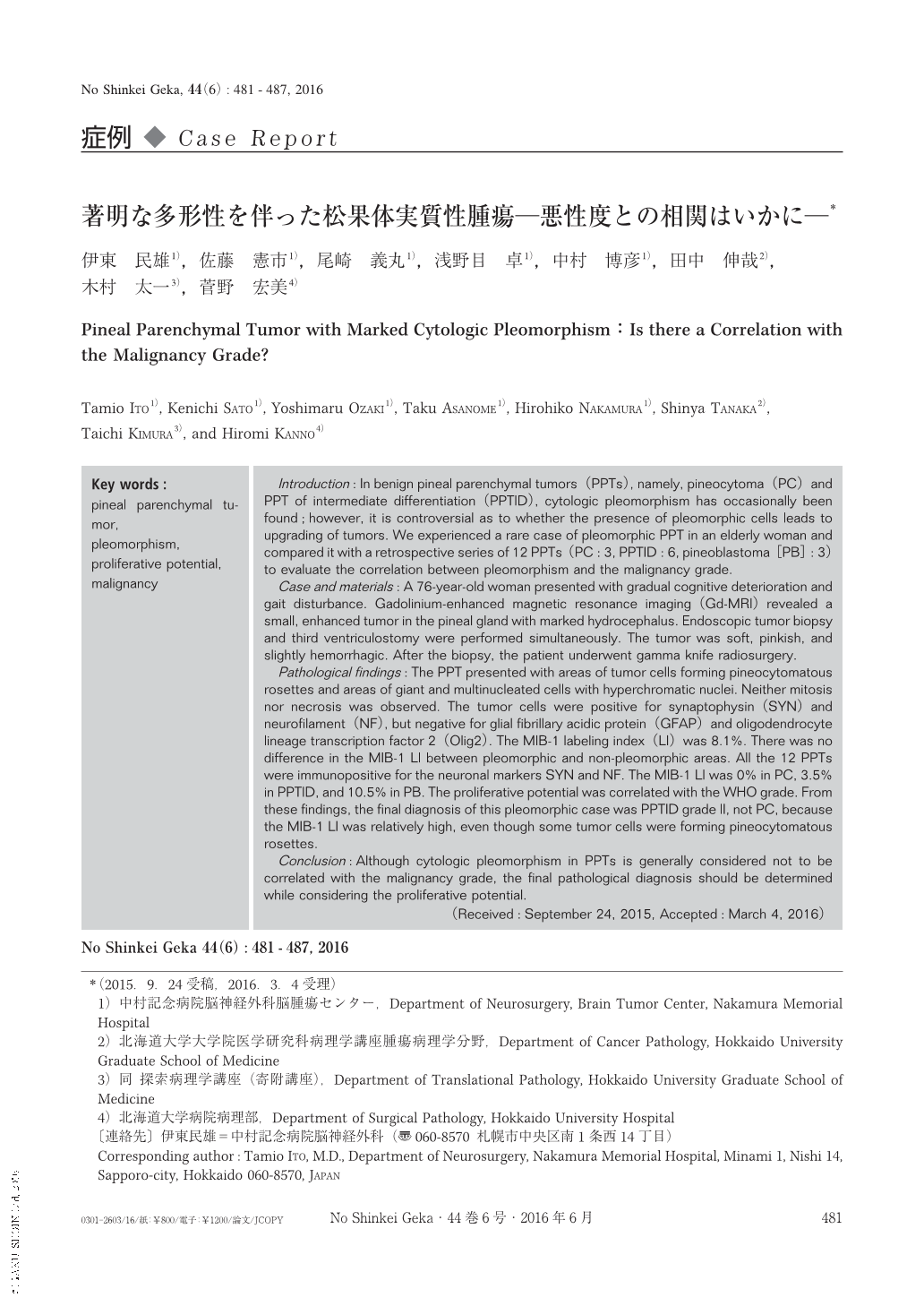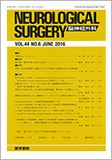Japanese
English
- 有料閲覧
- Abstract 文献概要
- 1ページ目 Look Inside
- 参考文献 Reference
Ⅰ.はじめに
松果体実質性腫瘍(pineal parenchymal tumors:PPTs)のうち,pineocytoma(PC)やpineal parenchymal tumor of intermediate differentiation(PPTID)では,ときに多形性を伴うことがあるが,本所見と悪性度との相関については議論のあるところである2,8,10).
今回われわれは著明な多形性を伴ったPPTの1例を経験したので,自験PPTs 12例(PC:3,PPTID:6,pineoblastoma(PB):3)の病理所見との比較より4,7),本症例の病理診断および多形性と悪性度との相関について文献的考察を行ったので報告する.
Introduction:In benign pineal parenchymal tumors(PPTs), namely, pineocytoma(PC)and PPT of intermediate differentiation(PPTID), cytologic pleomorphism has occasionally been found;however, it is controversial as to whether the presence of pleomorphic cells leads to upgrading of tumors. We experienced a rare case of pleomorphic PPT in an elderly woman and compared it with a retrospective series of 12 PPTs(PC:3, PPTID:6, pineoblastoma[PB]:3)to evaluate the correlation between pleomorphism and the malignancy grade.
Case and materials:A 76-year-old woman presented with gradual cognitive deterioration and gait disturbance. Gadolinium-enhanced magnetic resonance imaging(Gd-MRI)revealed a small, enhanced tumor in the pineal gland with marked hydrocephalus. Endoscopic tumor biopsy and third ventriculostomy were performed simultaneously. The tumor was soft, pinkish, and slightly hemorrhagic. After the biopsy, the patient underwent gamma knife radiosurgery.
Pathological findings:The PPT presented with areas of tumor cells forming pineocytomatous rosettes and areas of giant and multinucleated cells with hyperchromatic nuclei. Neither mitosis nor necrosis was observed. The tumor cells were positive for synaptophysin(SYN)and neurofilament(NF), but negative for glial fibrillary acidic protein(GFAP)and oligodendrocyte lineage transcription factor 2(Olig2). The MIB-1 labeling index(LI)was 8.1%. There was no difference in the MIB-1 LI between pleomorphic and non-pleomorphic areas. All the 12 PPTs were immunopositive for the neuronal markers SYN and NF. The MIB-1 LI was 0% in PC, 3.5% in PPTID, and 10.5% in PB. The proliferative potential was correlated with the WHO grade. From these findings, the final diagnosis of this pleomorphic case was PPTID grade II, not PC, because the MIB-1 LI was relatively high, even though some tumor cells were forming pineocytomatous rosettes.
Conclusion:Although cytologic pleomorphism in PPTs is generally considered not to be correlated with the malignancy grade, the final pathological diagnosis should be determined while considering the proliferative potential.

Copyright © 2016, Igaku-Shoin Ltd. All rights reserved.


